
“A picturesque agglomeration of buildings, beside the river. The mill-wheel, fed by a stream taken from the Teign some distance up the valley and here returned again to the parent water, thundered on its solemn round in an eternal twinkling twilight of dripping ferns and green mosses; while hard by the dwelling-house stood and offered small diamond panes and one dormer-window to the south. Upon its whitewashed face three fruit-trees grew–a black plum, a cherry, a winter pear; and before the farmhouse stretched a yard sloping to the river ford, where a line of massive stepping-stones for foot-passengers crossed the water“. Eden Phillpotts, ‘Children of the Mist,’ 1898.
It has been suggested by Jane Hayter Hames that Rushford Mill was in existence as far back as the fifteenth century, p.97. Some of the early millers were one Ann Dicker who resided there in 1792 and William Coombe in 1818, Bodman, p.60.. In the June of 1849 a local advertisement announced that; “To be sold by auction, by Mr. Thomas Hussey, at the Half Moon Inn, Exeter, on Friday, the 29th day of June 1849, at the hour of twelve noon, the fee-simple and inheritance of all that valuable freehold estate called Rushford Barton. together with the woods and mills situated in the parish of Chagford in the county of Devon… The mills on the river Teign consist of a dwelling house, mill house, and machinery, and 18 acres, 1 rod and 22 perches of meadow and pasture land, in the occupation of Mr. Peter Tarr, including the Island in occupation of Mrs. Taylor.” – The Exeter & Plymouth Gazette, June 16th, 1849. It was shortly after this time that the mill became part of the Rushford Estate. The above mentioned Peter Tarr had been connected with Rushford Mill since around 1829 which was the beginning of a family association lasting well over one hundred years. In 1855 another advertisement appeared stating; “Messrs. Norton, Hoggart and Trist have received instructions to offer for sale at the Mart on Friday 28th of September, at twelve, the Rushford Barton Estate… Also a corn mill driving three pairs of stones, situate on the river Teign, with miller’s house, and several enclosures of rich meadow land, in the occupation of Mr. Tarr, at a moderate rental of £44 10s per annum. An enclosure called the Island in the occupation of Mr. Coniam, at a nominal rental of £1 per annum.” – The Western Times, September 8th, 1855. In 1856 the estate which included the mill was in the ownership of Mr. George Hayter Hames in whose family it remained for many years. By 1870 Peter Tarr’s son John had taken over the running of the mill until his death in 1895, it was reported that he had experienced failing health for some time but suffered a fatal stroke whilst walking to his front door. Following his father’s death John Tarr junior took over the mill which he ran until 1935, sadly he died the following year. In 1935 the mill was once again up for letting; “To let by tender, from Michaelmas, 1935, the well known and highly productive farm known as Rushford Mill, being a rich sheep and dairy farm situate half a mile from the residential and holiday centre of Chagford, Devon. It comprises a good farmhouse (2 sitting and 5 bedrooms, bath H & C etc.), tea garden, outbuildings, threshing machine and other machinery driven by water power and about 116 acres of very fertile land (58 acres arable and the remainder meadow and pasture). The owner is prepared to erect modern farm buildings suitable for Grade ‘A’ milk production,” – The Western Times, June 21st, 1935. It appears that before leaving Rushford Mill John Tarr purchased an agricultural and residential property called ‘Westwoods’ at Ogwell, near Newton Abbot for the princely price of £4,500 – The Western Times, February 15th, 1935. This possibly would indicate that Rushford Mill provided him with a good living. Once the old mill wheels had stopped turning Rushford continued as a farm with the water power being utilised for farm machinery.
As can be seen below the old mill appeared on Benjamin Donn’s map of 1765 which is amongst the earliest cartographical reference to the place. Again below, the 1840 Chagford tithe apportionment map shows the enclosures mention in the various auction notices. The majority of these were pasture land with the ‘Sand Plat’ being put to arable use. Also shown is the small enclosure called the ‘Island’ which again was pasture. One interesting enclosure name is that of ‘Cream Close’ which is suggestive of fertile grazing land which produces quality milk for making into cream or butter.
With regards to the mill itself, Bodman notes that: When W. H. Worth visited he recorded the waterwheel as breastshot, 12ft by 3ft, with floats of 9.5 inches. In 1926 it worked three pairs of stones, a kibbler, a winnower and a chaff cutter.” p.51. The water which powered the mill was delivered by a leat which extracted the water from a weir some 700 metres upstream of the mill as can be seen above.
As with any old mill there is always a romantic attraction for may folk and one which still lingers today. There can be no question that Rushford Mill attracted many visitors amongst whom were several artists and photographers. The mill was included on the itinerary of quite a few tourist excursions which ran throughout the late 1800s and early 1900s. One of the most popular views of the mill have always been the set of stepping stones, locally known as ‘steps’. As can be seen below they feature heavily in virtually all the early postcards and all of the works of art. At some point in time it appears that there was a plank involved with the steps. In the June of 1937 it was reported that; “the plank at the Rushford Mill Stepping Stones was missing,” and that it was decided not to replace it. Instead Mr. Hayter Hames promised to fill the gap with a large stone. The following year another newspaper report noted that the Clam Bridge at Rushford Mill was in dire need of repair. Now whether this referred one at the mill or one further upstream which spanned the leat is not made clear but either-way it was agreed that the footpath committee should inspect it. Whilst on the subject of the ‘Rushford Steps’ in 1921 John Tarr was making his way across them when he spotted a huge dead salmon which experts hailed as the largest one ever seen in those waters. It weighed just under 28 pound with a girth of 23 inches and a length of 5 feet 10 inches. It was thought that it had died from exhaustion caused by spawning – what a way to go!
If you look at the bottom left-hand corner of the small aerial photo above you can just about to see a small part of Chagford Swimming Pool. This first came about because there were many complaints from paying anglers that local children were spoiling their fishing by swimming in the river. A plot of land at Rushford Mill was given by Mr. Hayter Hames on which a swimming pool was be constructed. The actual plot used to be an apple orchard along with the mill pond The water supply for the pool was drawn from the old mill leat which was conveniently placed nearby. Work began in 1933 when a combination of fund raising and voluntary excavation work saw the Chagford Swimming Club come into being. It was reported that 1933 had been a successful season with the balance sheet showing a small profit. It was stated however that still a lot of improvements needed to be done before the next season. The original pool was very basic with just a mud bottom and no method of filtration. The local fire brigade would have to empty the water back into the river and then sluice it clean before refilling it. This operation had to be carried out several times each year.
In 1935 the swimming pool saw a dramatic event when P. C. Turner rescued two girls from drowning. It was reported that initially he spotted one girl in difficulty and after removing his helmet he dived in and discovered that in fact there were two girls in danger. Thankfully he managed to rescue them both and drag them to safety on the bank of the pool. The pool was officially opened on the 8th of June 1936 and in the July of that year Chagford School held their first swimming gala in the official pool. Today the pool can boast air-sourced heat pumps, PV panels, a UV filtration system and hot showers. As far as accolades go Chagford Swimming Pool is said to claim that it’s the largest open-air fresh water swimming pool in the South West of England, for more details visit their website – HERE.

Bodman, M. 2015. Mills on the Teign. Exeter: Leat Press.
Hayter Hames, J. 1981. A History of Chagford. London: Phillimore & Co. Ltd.

“At Rushford Mill, now a farm, are more stepping stones and another ford. Here too the mill leat runs out from beneath the building, now a barn. By the stile is a discarded millstone and deep granite trough. In front of the cottage are six more troughs, and by the barn another four – one of which is circular.” J. Hayward, Dartmoor 365, p.50.
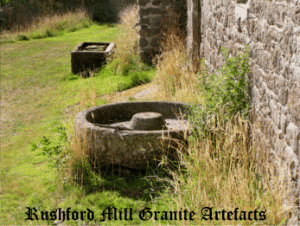
 Legendary Dartmoor The many aspects past and present of Dartmoor
Legendary Dartmoor The many aspects past and present of Dartmoor

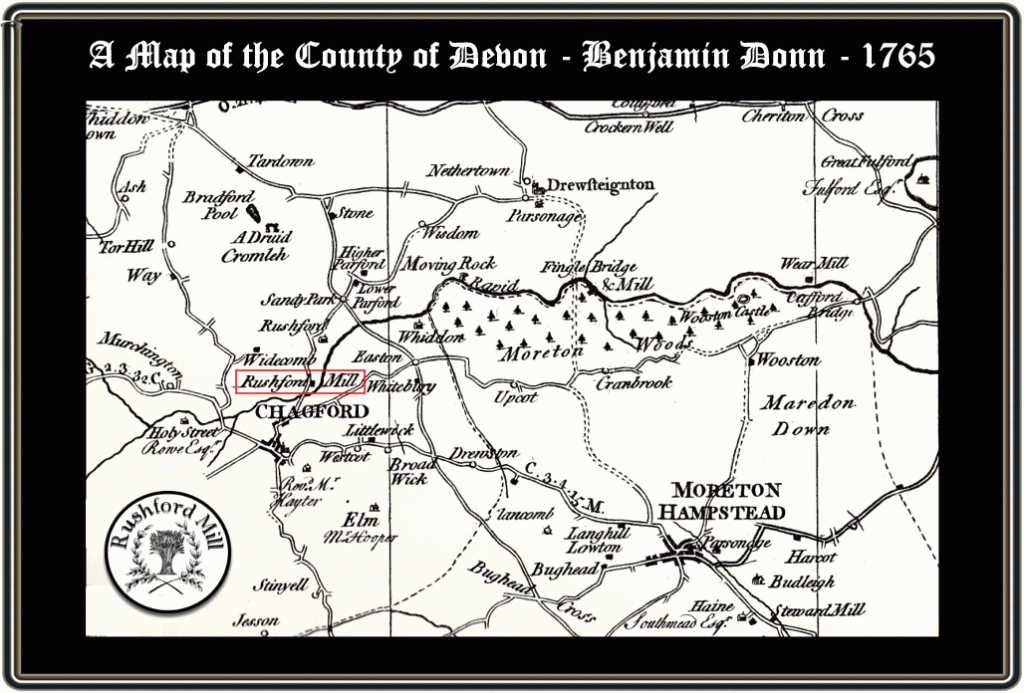
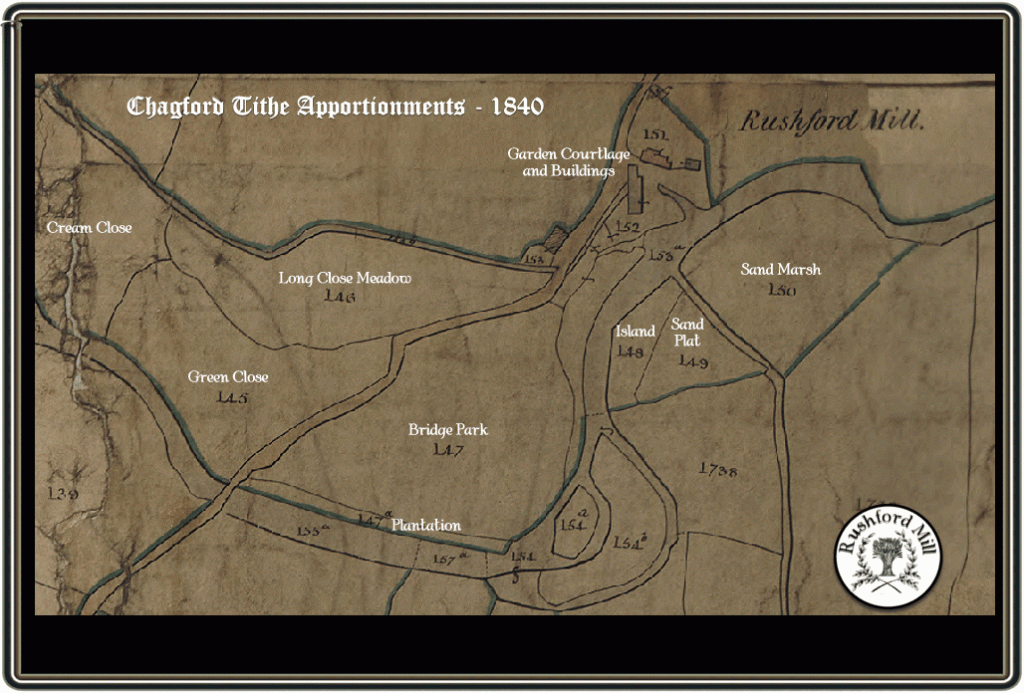
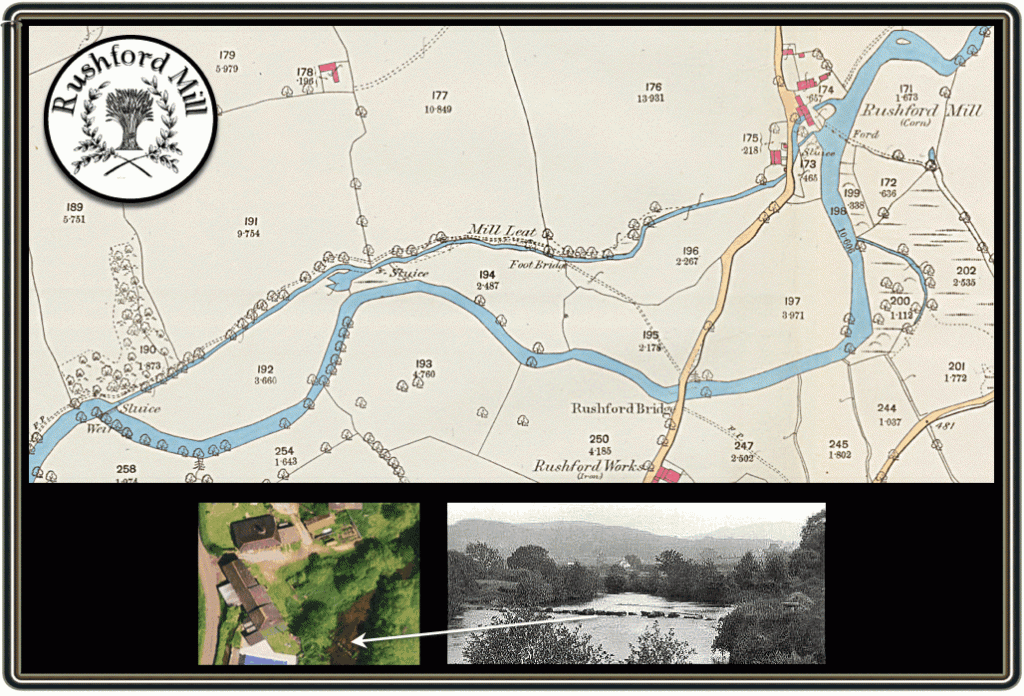
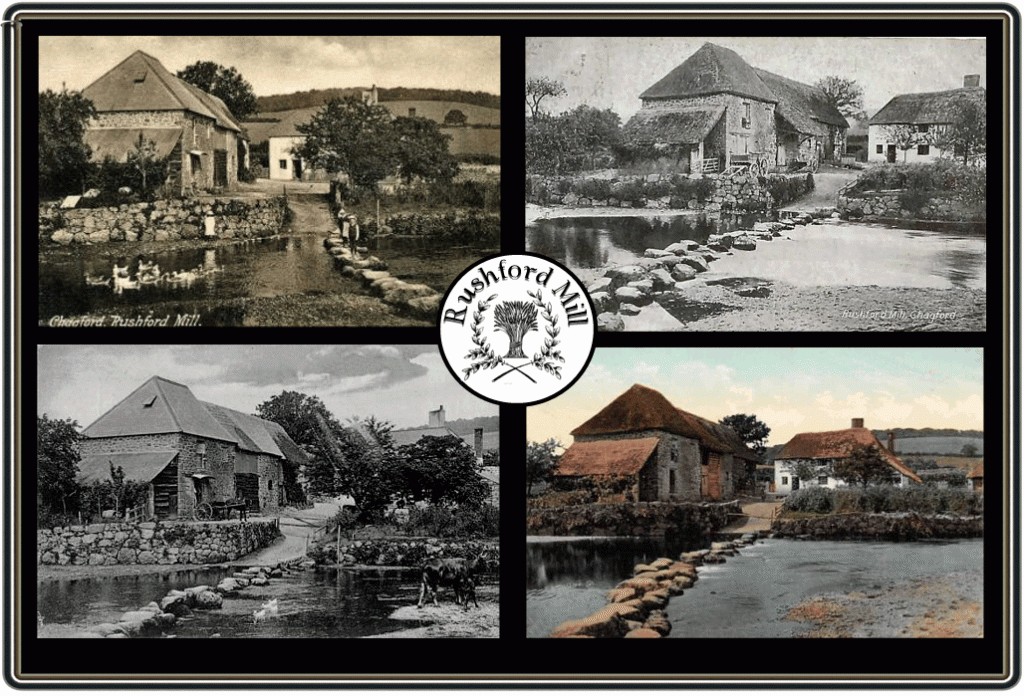
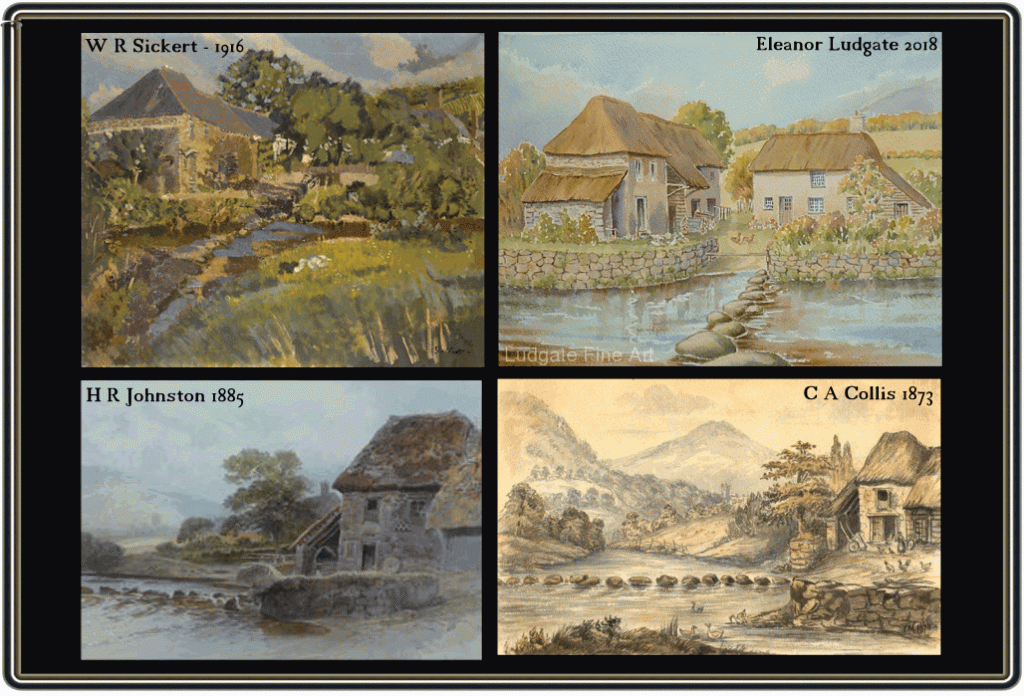
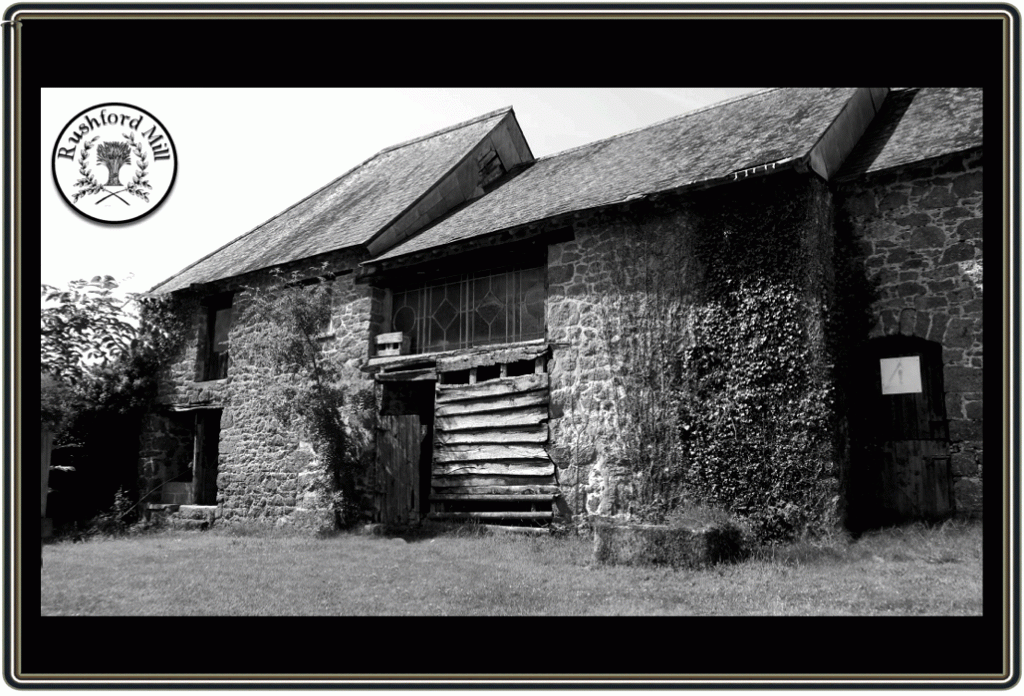
Great article thank you. I am researching my wife’s heritage who is a decent of Peter Tarr. I will be attaching your article to their family tree, I hope you don’t mind.
Hi Simon, no problem.
Carleton TARR …abberleyhills@icloud .com ….most impressed by Tim Sandles research .
Perhaps we can meet when in Devon next.
Best Wishes from our Family Tree.